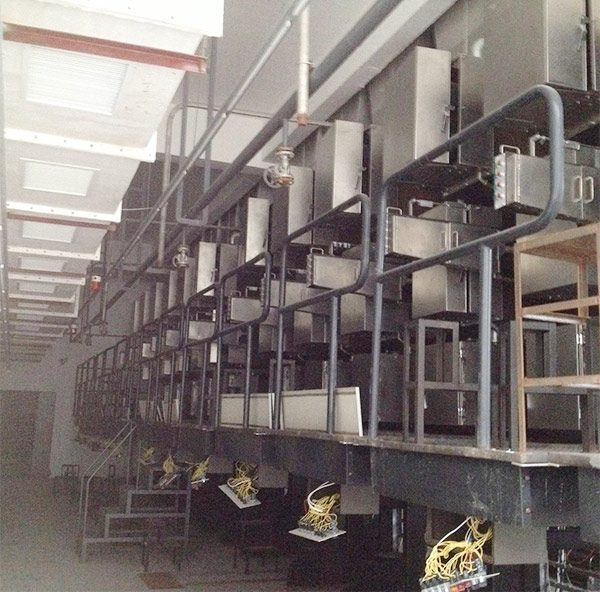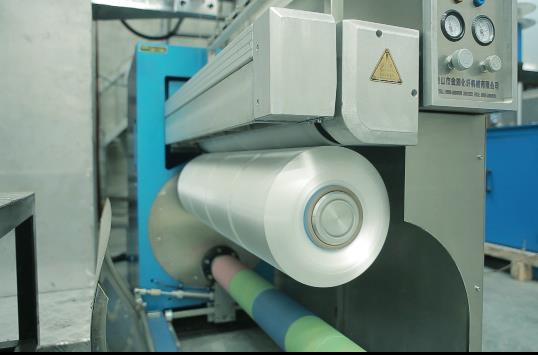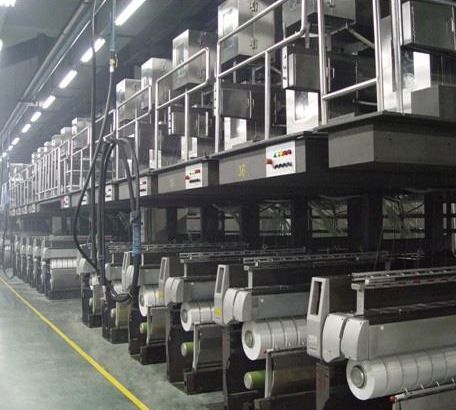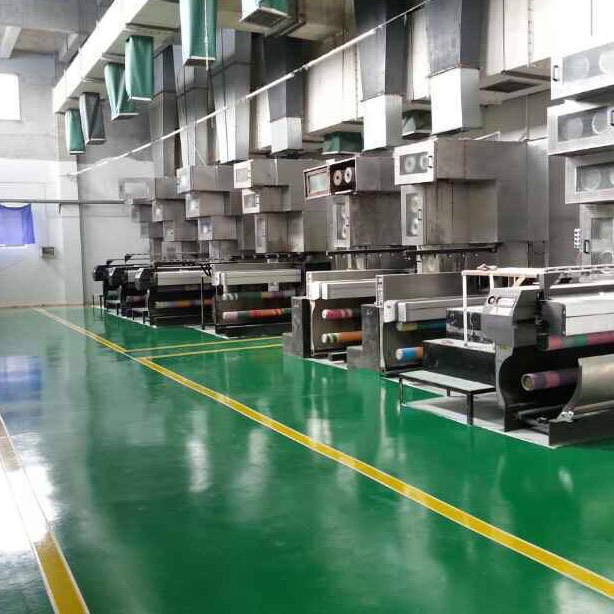- Polypropylene spinning machine
- Polypropylene FDY equipment
- Polyester POY spinning machine
- Polyamide FDY common and high strength equipment
- Polyester FDY equipment
- Polyester high strength equipment
- polyester、Polyamide、 Polypropylene BCF equipment
- Small spinning machine
- All kinds of spinning special parts
- Textile News: Full-chain Efforts + Cross-border Breakthroughs + Talent Foundation - The Textile Industry is set to Experience a Development Trio!
- The 2025 China Home Textile Fashion Innovation Conference grandly kicked off in Binzhou
- On the Important Role of Polypropylene Spinning Machines in Chemical Fiber Production
- Management Skills: Managing Problems = Managing Efficiency: Anchor the essence of management, Break through problems and seek results through efficiency!
- Shandong is promoting the transformation and upgrading of its textile industry through intelligent manufacturing
- Guide to Parameters of Polypropylene Spinning Machine Equipment

- Contact:Mr. Huang Guofu
- Cel:0086-13901505556
- Fax:0086-519-83341119
- Email:czfb5556@126.com
- Add:No. 288-8 ChangLi Rd, Huangli Town, Changzhou, JS PRV.
In the current highly competitive market environment, the standardization and efficiency of enterprise management are directly related to the survival and development of the organization. Some enterprises often encounter problems such as unbalanced management order and low work efficiency during their operation, which not only affect the optimal allocation of internal resources but may also restrict the improvement of the core competitiveness of the enterprise.
I. Chaos in Enterprise Management?
Chaotic enterprise management is often reflected in multiple operational links, specifically manifested as the following typical phenomena:
1. The boundaries of responsibilities are ambiguous
In some enterprises, the division of departmental functions within the organization is not clear, with "intersection zones" and "blank areas", which leads to the situation of "multiple management" or "no one taking responsibility" when allocating work tasks. When problems arise, departments tend to shirk responsibility from each other and it is difficult to define responsibilities, which not only affects the efficiency of work progress but also undermines the internal collaborative atmosphere.
The communication mechanism is not smooth
Excessive levels of information transmission and a single channel can lead to deviations, delays or even omissions in the transmission of important decisions or work instructions. The lack of standardized procedures for cross-departmental communication requires repeated coordination but makes it difficult to reach a consensus. A great deal of time is wasted on ineffective communication, which seriously affects the progress of work.
3. The meeting efficiency is low
Some enterprise meetings lack clear themes and agendas, the scope of participants is unreasonably defined, discussions deviate from the core topics during the meeting, and no clear action list and responsibility division is formed after the meeting. Long and inefficient meetings not only take up a lot of employees' working time, but also fail to solve practical problems, resulting in a waste of management resources.
The process execution is loose
Although relevant management systems and work processes have been established, there is a lack of effective supervision and control mechanisms during the implementation process. Some employees have a mentality of "emphasizing formulation over execution", and the processes are merely formalities. When encountering special circumstances, arbitrarily breaking the process norms leads to uneven work quality and increases the operational risks of the enterprise.
Ii. The Path of Transformation to Double Efficiency
1. Optimize the organizational structure and clarify the boundaries of responsibilities: Based on the principle of "streamlined and efficient, with equal rights and responsibilities", in combination with the enterprise strategy and business segments, rationally divide the functions of departments, clarify the rights and responsibilities of departments and positions, and eliminate functional overlaps and gaps. Reduce management levels and build a flat structure to shorten the decision-making path and improve response speed; At the same time, formulate the "Job Description" and the "Department Responsibility Manual" to ensure that employees are clear about their job scope and responsibilities and avoid shirking.
2. Build an efficient communication system and break down information barriers: Establish standardized communication processes and channels, clearly define the methods, time limits and responsible entities for information transmission; Urgent and important information is quickly conveyed through instant tools or face-to-face meetings, while regular reports are standardized through fixed reports and regular meetings. At the same time, a cross-departmental collaboration platform should be established, with clear contact persons, communication frequencies and mechanisms defined to reduce costs and improve efficiency.
3. Standardize meeting management and enhance decision-making efficiency: Strictly enforce the meeting approval system, clearly define necessity, theme, agenda, participants and duration, and eliminate meaningless meetings. Distribute materials before the meeting to help participants prepare. During the meeting, a dedicated person controlled the pace and led the discussion to focus on the core. A summary should be issued within 24 hours after the meeting, clearly defining the action items, responsible persons and time limits, and establishing a tracking and supervision mechanism to ensure the implementation of decisions.
4. Improve process systems and strengthen execution supervision: Comprehensively review the existing work processes, eliminate redundant links, optimize key nodes, form a standardized and quantifiable process system and solidify it in documents to ensure that employees have rules to follow. Establish a supervision mechanism for process execution, monitor the execution situation in real time through regular inspections, data tracking, and internal audits, and promptly correct deviations and hold accountable. At the same time, in light of business changes and execution feedback, the process and system should be revised regularly to ensure their scientificity and applicability.
5. Establish a scientific performance appraisal system to stimulate employee motivation: Guided by the enterprise's strategic goals, break down and form departmental and job appraisal indicators to ensure alignment with the strategy; The indicators take into account both quantitative and qualitative aspects, highlighting operability. Establish a fair assessment process and adopt a four-dimensional evaluation method of "superior + peer + self + data" to ensure the objectivity of the results. Link the assessment results to salary, promotion and training, and form a "reward the excellent and punish the poor" mechanism to stimulate the enthusiasm of employees.
6. Strengthen personnel management and training to enhance professional capabilities: Develop a systematic employee training plan: Based on job requirements and capability weaknesses, conduct training on responsibilities, processes, and skills to ensure employees' ability to perform their duties. Establish a talent echelon mechanism, reserve core talents through internal training, job rotation and mentorship system, and maintain management stability. At the same time, we should strengthen cultural construction, advocate the concepts of "responsibility, collaboration and efficiency", create a positive atmosphere and enhance employees' sense of identity.
Iii. Dig deep into the root causes of management chaos
The chaos in enterprise management is not accidental but the result of the long-term accumulation of multiple factors. It is necessary to start from the underlying logic of the organization to explore the root cause of the problem:
Unreasonable organizational structure design: Some enterprises fail to optimize their organizational structure in a timely manner based on business scale and strategic goals during their development process, resulting in problems such as hierarchical redundancy and mismatch between departmental Settings and business needs. The lag in the architecture leads to an overly long management chain, reduced efficiency in decision communication and execution, and makes it difficult to respond quickly to market changes and internal demands.
The system construction is not perfect: The management system lacks systematicness and coherence. Some provisions are too general and have weak operability, and cannot effectively guide actual work. At the same time, the system is not updated in a timely manner and is disconnected from the current stage of enterprise development, industry policies and market environment, resulting in the system losing its constraining and guiding role and being unable to provide strong support for management order.
The performance appraisal mechanism is not scientific: The setting of performance appraisal indicators is disconnected from the enterprise's strategic goals. There is an excessive focus on short-term performance indicators while neglecting the construction of long-term development capabilities. The assessment criteria lack quantitative basis, and the proportion of subjective evaluation is too high, resulting in insufficient fairness and impartiality of the assessment results. An unreasonable assessment mechanism cannot effectively motivate employees' enthusiasm; instead, it may trigger their resistance to management and exacerbate management chaos.
Insufficient personnel management and capacity building: The job training for employees lacks pertinence and systematicness. Employees have an unclear understanding of their job responsibilities, work processes and enterprise systems, and their professional capabilities do not match the job requirements. At the same time, the lack of effective talent echelon construction and insufficient reserve of core position personnel make it difficult for management work to be smoothly connected, increasing management risks.
Changzhou Fubon Chemical Fiber Machinery Factory Technical production: Polypropylene spinning machine, polypropylene FDY spinning machine, polypropylene FDY equipment, polyester POY spinning machine, polyester POY production line, polyester POY equipment, polyester POY machinery, polyester recycled bottle FDY spinning machine, polyester FDY spinning machine, polyester FDY machinery, Spandex spinning machine, spinning special parts, polyester small Experimental machine, polypropylene small experimental machine, nylon small experimental machine.
- Textile News: Full-chain Efforts + Cross-border Breakthroughs + Talent Foundation - The Te
- The 2025 China Home Textile Fashion Innovation Conference grandly kicked off in Binzhou
- On the Important Role of Polypropylene Spinning Machines in Chemical Fiber Production
- Management Skills: Managing Problems = Managing Efficiency: Anchor the essence of manageme
- Shandong is promoting the transformation and upgrading of its textile industry through int
- Guide to Parameters of Polypropylene Spinning Machine Equipment
- The second Smart Fiber and Flexible Wearable Technology Exchange Conference was held in Na
- Minor Snow moistens the cold, craftsmanship weaves warmth: An Analysis of the Core Tempera
- Textile News: Takeout windbreakers are popular both at home and Abroad, and AI design brea
- The 6th Liaoning Province Textile and Materials Graduate Forum and Textile Young Scholars




